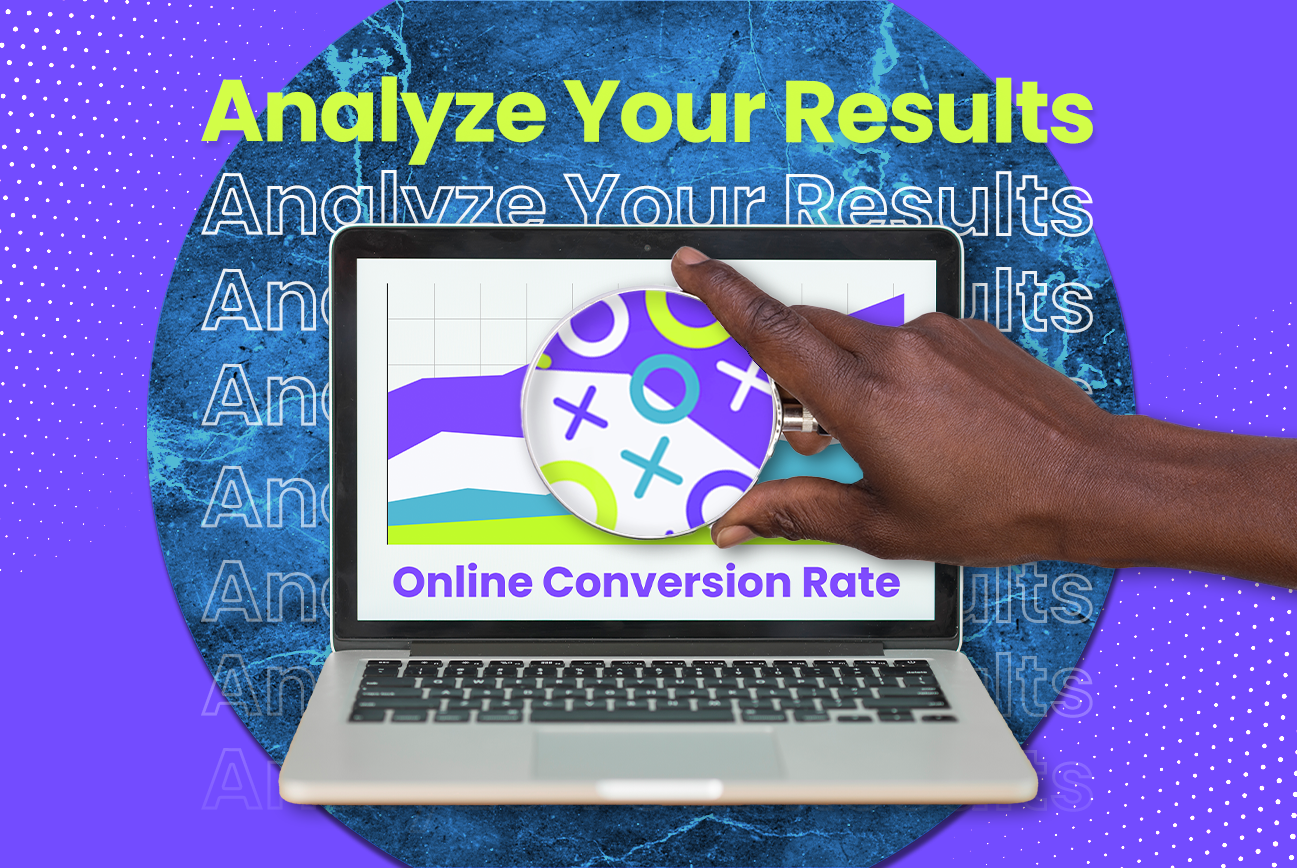You worked hard this year-end appeal season. Hopefully, it paid off, and you raised a lot of money! But do you really know how to evaluate your year-end appeal?
Or do you just count how much you raised and call it a day?
The amount of money you raised is significant. But you should evaluate your year-end fundraising push in several other ways. Here are five key data points you need to measure if you are not already!
Online conversion rate.
As you know, digital-first strategies have taken center stage in the world of fundraising, especially with all those December 31 “last chance” emails. So, it’s more important than ever to make sure your donation page is working for you, not against you!
It’s easy to calculate your online conversion rate!
You are using Google Analytics or another platform to monitor your web traffic, right?
If so, you just need to follow this simple formula: Divide the number of online donations you received by the number of people visiting your online donation page during a given period.
For example, if you brought 150 people to your online donation page and secured 40 donations, your online conversion rate would be 26.6 percent!
That’s above the average of 19 percent for nonprofits, according to M+R Benchmarks!
READ MORE: Can you improve your donor conversion rate?

Direct mail response rate.
It’s also important to understand how your non-digital communications are performing. And the response rate on your direct mail appeals can tell you a lot about how donors react to your mailings. If your response rate has been lagging, your data may be why.
Keeping good data hygiene is a common issue for nonprofits.
And it’s hard to get an accurate picture of how your communications are performing when you don’t take time to clean up your mailing list!
Some of your contacts may have changed their address, passed away, or stopped giving for any number of reasons.
Ultimately, you end up skewing results when sending mail to people who will never respond!
Cutting down your mailing list to only those who want to receive your mailings will give you a more accurate picture of your response rate.
But what if your data is up to date and you’re still underperforming?
Have you considered how your messaging, layout, or the timing of your mailing could be impacting results? It might be time to assess your approach and try something new!
And remember, only experiment with one aspect of your mailing at a time so you can run a successful A/B test.
READ MORE: Can you be more strategic with your mailing list?

Cost per donor.
Do you know how much it costs you to acquire a new donor?
For many nonprofits, the answer is “kinda” or “not really”. Luckily, like your online conversion rate, all you need is a formula and a little data to figure it out!
Simply divide the number of new donors you acquire by the expenses related to donor acquisition for a given period!
This will give you a better picture of what it costs your organization to acquire each new donor.
Compare this number to the average lifetime value of a donor and determine if there is room for improvement.
For example, you have some work ahead of you if it costs $50 to acquire a new donor, and the average donor only makes a one-time gift of $25.
This is a bigger problem than most nonprofits think! In fact, it can cost 50 to 100 percent more to acquire a new donor than you will receive from their first gift, according to Bloomerang.
This leaves you with two ways to improve:
- Find ways to lower the cost of acquiring new donors.
- Improve donor retention to maximize a donor’s lifetime value.
READ MORE: How to evaluate your fundraising efficacy.
Average gift size.
What is your average size donation, and how has it changed over time?
This is an important metric for evaluating your year-end appeal. It can also tell you a lot about how your donor base is growing and if you are using effective personalized ask strings.
Ideally, your average gift size should grow over time.
But if it’s not, look at how your donors respond to your personalized asks. If they consistently choose the option at the low end of your ask string, you may need to be less aggressive.
Let’s look at your ask strategy.
A common ask string goes something like this:
- ASK 1 = Last Gift
- ASK 2 = 1.5x Last Gift
- ASK 3 – 2x Last Gift
This approach subtly encourages donors to give more than they did last time. However, if the donor’s last gift was three years ago, you might want to be softer. Or, if you find too many donors are choosing ASK 1 (or lower), use a less aggressive ask string that still encourages an increase, such as:
- ASK 1 = Last Gift
- ASK 2 = 1.25x Last Gift
- ASK 3 = 1.5x Last Gift
Then, couple your ask string with messages about the impact a slight increase in gift size will have on your goals and track how donors respond. You can return to a more aggressive approach later for donors who choose to give at the high end of this ask string!
READ MORE: Applying data-driven ask strings in your appeals.
Return on investment.
This final point encompasses everything we’ve discussed earlier in this blog post. After all, this is the key metric your organization’s leadership will have their eyes on. And while knowing all the things that go into your ROI will help you improve, it’s important to understand the big picture as well.
For example, it sounds great to say your campaign raised $100,000. But it’s less impressive if you spent $95,000 getting there! Most of the money your donors are giving goes right out the window! Investing $95,000 the right way to raise $150,000 results in much higher net revenue.
So, think of ROI like your report card. It won’t contain every detail or highlight every positive or negative in your strategy.
But it does paint a broad picture of how the money you spend impacts your work.
Understanding your ROI helps explain how your fundraising outreach is performing to those who are less involved with the day-to-day of your development team, such as board members, executives, or sponsors.
But it is certainly not the end-all-be-all! So be sure to analyze each data point we’ve discussed in this post when it comes time to evaluate your year-end appeal!
Want to analyze your results with an amplifi development strategist? Click here!









